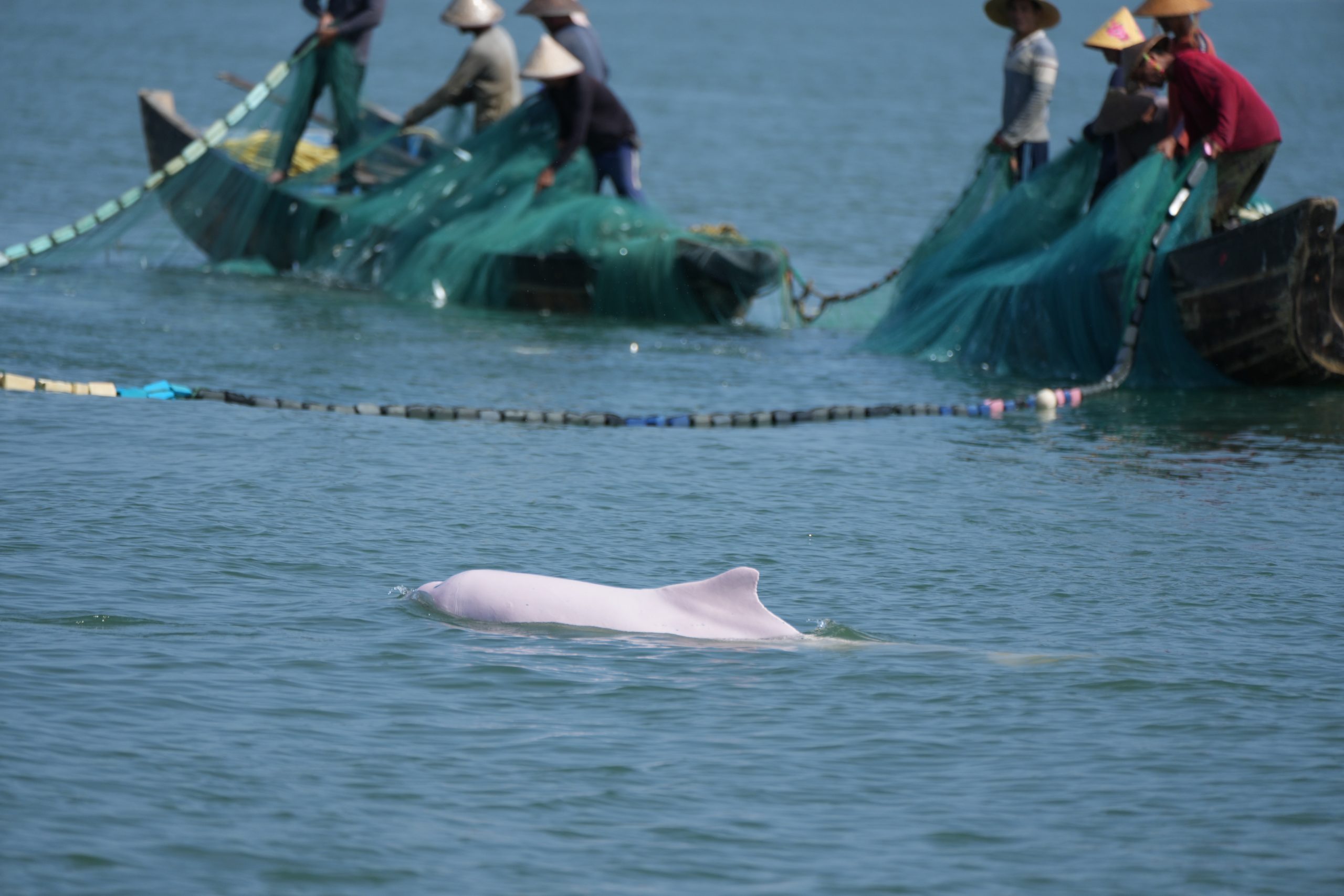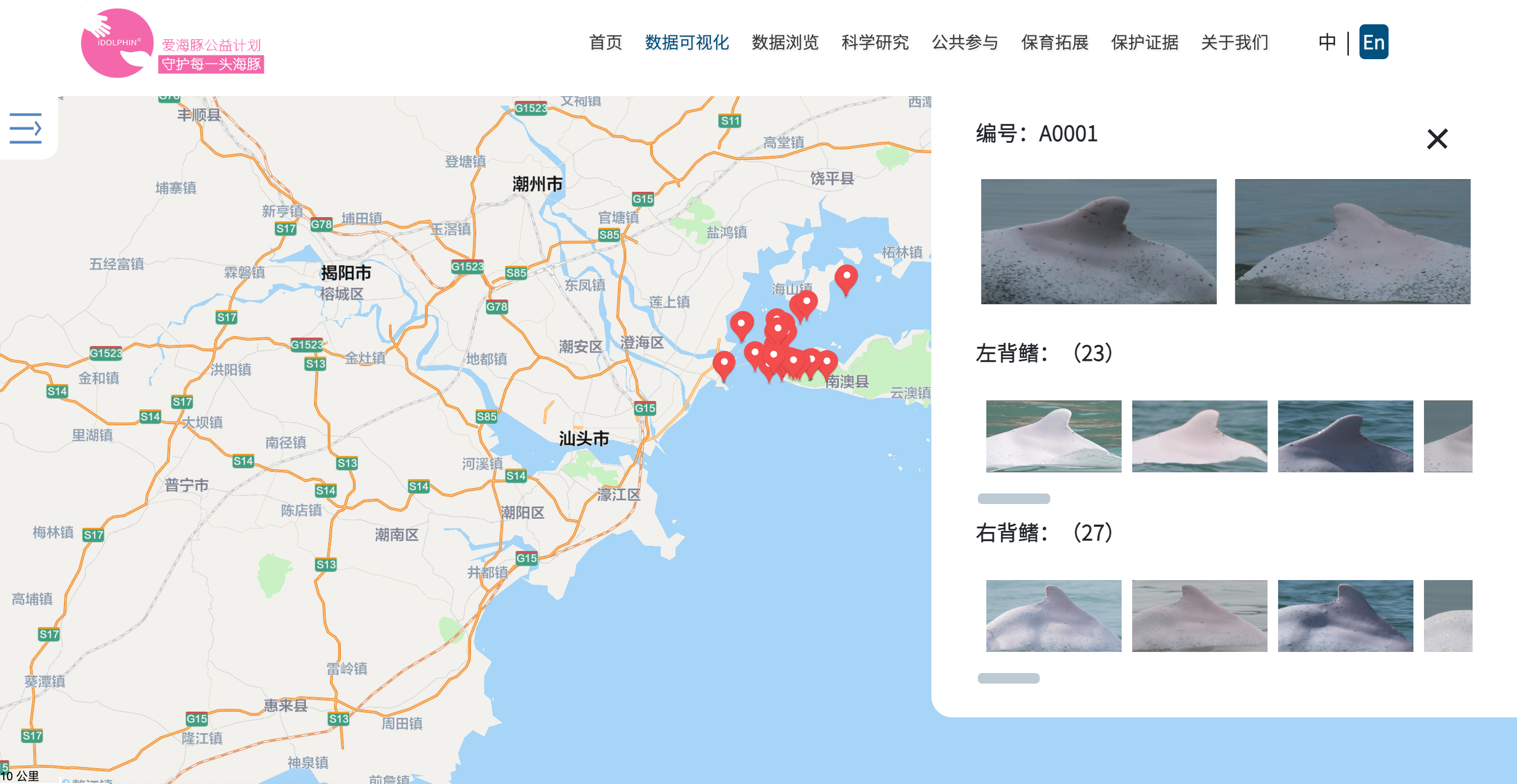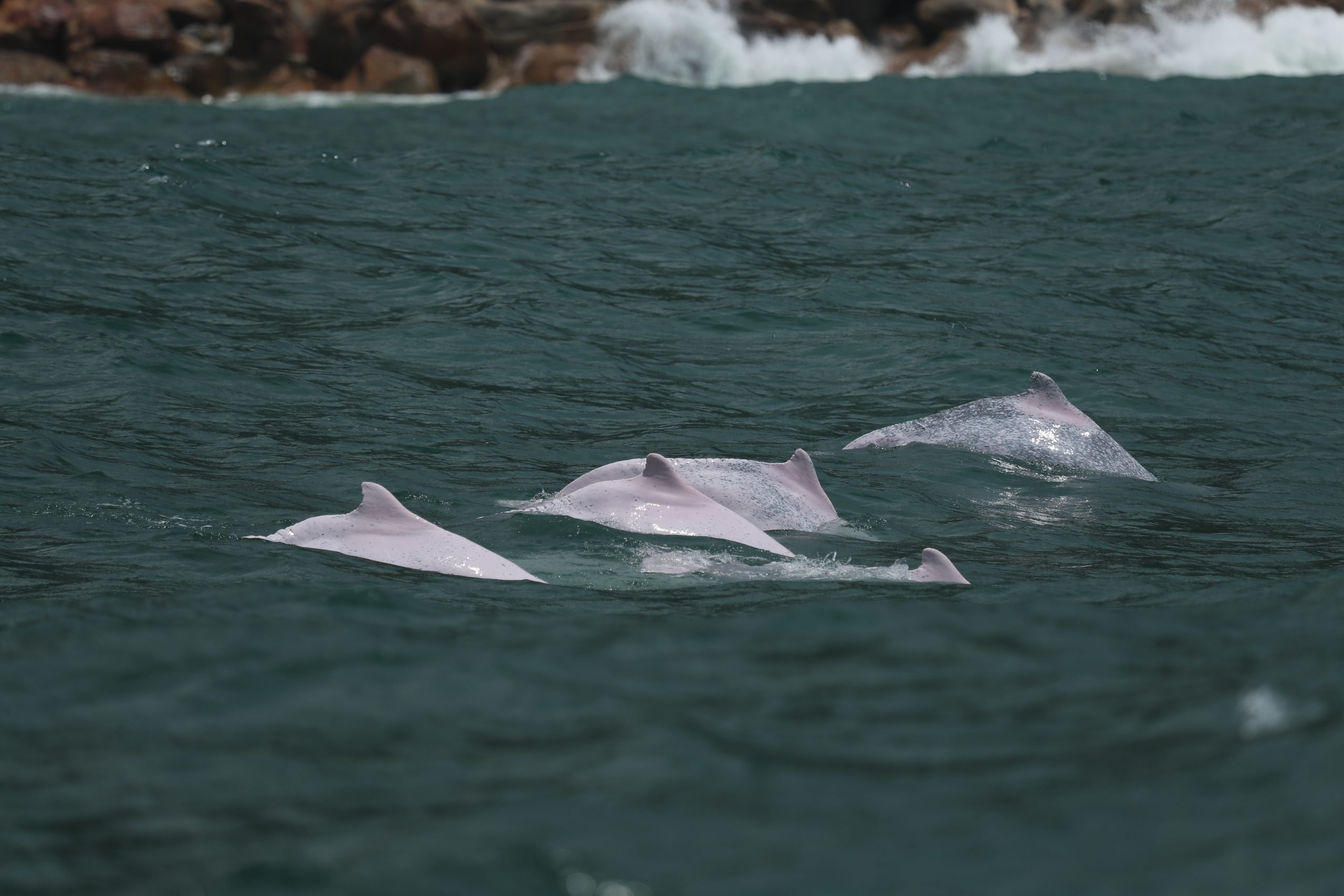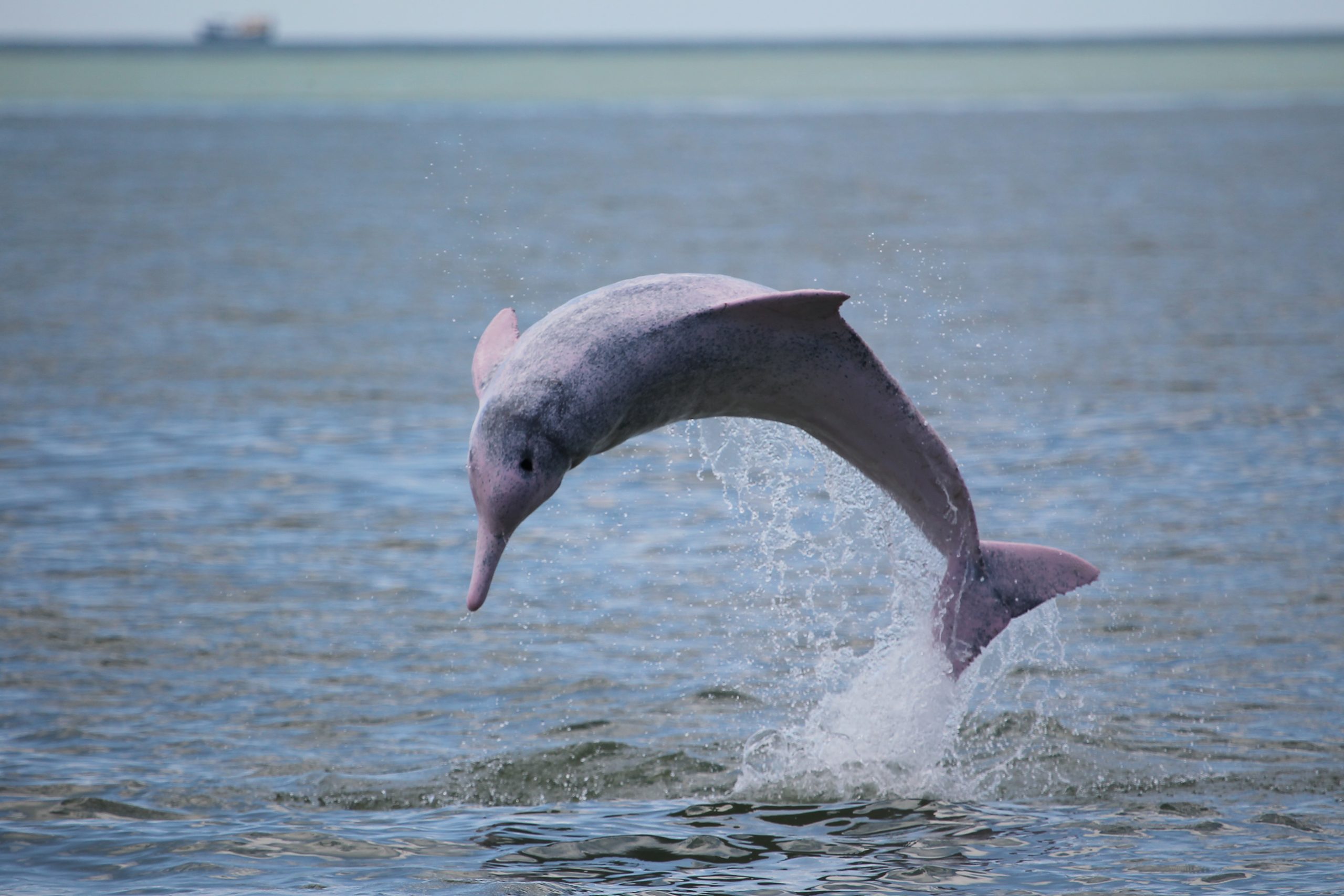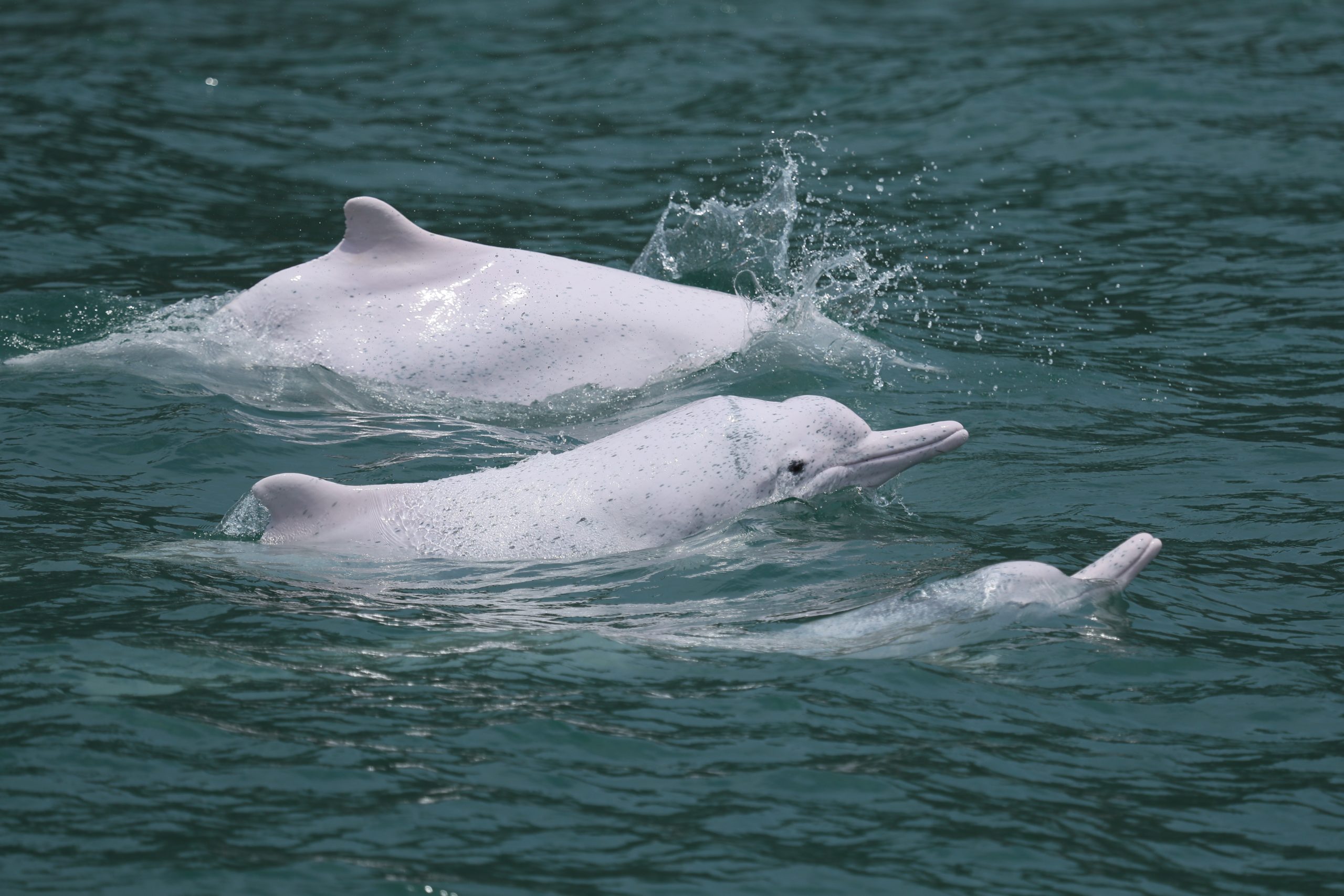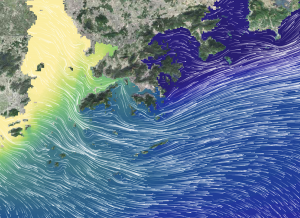On 5 March 2022, Yu Wenlin of Shantou, Guangdong shot some aerial footage of an endangered group of Chinese white dolphins near the island of Nan’ao, off the coast of south-east China. One of the dolphins was carrying a dead finless porpoise on its back.
Yu shared the footage with the ChinaBlue Sustainability Institute (ChinaBlue), where researchers added the evidence of unusual behaviour to their database. As a finless porpoise resembles a newborn white dolphin, the researchers theorised the dolphin may have been trying to help the porpoise breathe. They named the dolphin YWL, after Yu Wenlin.
ChinaBlue’s database is integrated into iDolphin, a citizen science “mini-app” available on the popular messaging service Weixin. iDolphin’s mission is to crowdsource conservation research, helping to overcome data barriers and centralise white dolphin information. It aims to mobilise all layers of society, including the general public, to help protect the animal. This kind of action may ease the neglect of China’s smallest families of white dolphins, and other small populations of threatened species.
About 6,000 Chinese white dolphins – also known as Indo-Pacific humpbacked dolphins – remain in the world, according to a 2017 Ministry of Agriculture estimate. Most of these animals (4,000–5,000) live in China’s south-eastern waters, across eight locations. The mouth of the Pearl River is home to the largest population, of over 2,000. In the one off the coast of Shantou, meanwhile, only 13 animals survive.
The predicament of the white dolphin has earned it the moniker “panda of the seas” in China. In fact, it is the only cetacean to have national Class I protection status – the highest China provides. Meanwhile, the species is classified as “vulnerable” on the IUCN (International Union for Conservation of Nature) Red List of Threatened Species.
Following the publication of a 2017–2026 conservation action plan for the white dolphin, a Ministry of Agriculture notice called for “a better understanding of [the] numbers, distribution, seasonal changes, habitat use, range and behavioural characteristics of Chinese white dolphin populations; and creation of files on each animal, with photographs for identification.”
Zheng Ruiqiang is ChinaBlue’s science chief and the founder of iDolphin. He says that citizen science and data visualisation tools give an overview of white dolphin populations, which then serves as the basis for government policymaking and builds public support. “Even if smaller populations are doomed, we shouldn’t abandon them,” Zheng says.
AI dolphin-recognition technology
Individual Chinese white dolphins can be identified by the shape of their dorsal fin. In the past, scientists would take photographs from a boat and manually compare these to images stored in databases.
The time-consuming nature of that process means researchers cannot conduct daily monitoring over extended periods. But local people and fishers can. Getting more of them involved in monitoring would enhance the data available for researchers to analyse, and support more effective policymaking.
Enter Zheng and his team, who harnessed AI to make iDolphin possible. It can identify an individual dolphin from a photograph in only 10 seconds and is 93% accurate, Zheng says.
To date, iDolphin has processed 34,816 photographs and identified 2,688 individual dolphins, helping to centralise and democratise data that would otherwise be scattered between scientists, research institutions and citizens. In 2021, the app was selected as one of the “100+ Biodiversity-positive practices and actions around the world” for the COP15 UN biodiversity talks.
The team has been able to map and visualise data on five populations: three small ones – in Sanniang Bay, Xiamen–Jinmen and Shantou – and two relatively large ones – at the mouth of the Pearl River and Leizhou Bay.
Data is key
Alongside facilitating crowdsourcing, iDolphin also aims to break down data barriers. Zheng says there are problems with the data available on the white dolphin: monitoring methodologies aren’t standardised, data isn’t joined up across regions, and government data isn’t accessible. For example, when surveying population numbers, some researchers identify individuals from photographs, while others run a transect survey; the data produced can vary greatly.
In a transect survey, researchers sail along a given line through an area and count the number of dolphins they see, and at what distances. This allows population size and density estimates to be made.
Last year, one expert claimed that the population of Chinese white dolphins in the Beibu Gulf, where the Sanniang Bay population is located, had increased from less than 100 in 2004 to 300 in 2022. Crediting cooperation between research institutes, NGOs and the government, the expert claimed that 70% of the group were of a viable breeding size, giving it a healthy age structure. Zheng and his team’s photograph-based surveys came to a different conclusion, however. They found the population to have shrunk from 156 to 102 between 2015 and 2019.
Zheng says inaccurate or inaccessible data leads to misguided policy. This in turn reduces the efficacy of conservation efforts and means the best opportunities are missed.
Zheng is working on data cooperation with other research bodies in order to break down barriers, helping both government and research institutes. It isn’t easy, he says. Species data should be public, he thinks, but some has become the “private property” of researchers or organisations.
“If gathering of the data has been supported by government funds or charity, then it should be as openly available as possible. After all, that’s easily done with current copyright protections and data-protection measures,” says Zheng.
The plight of small populations
China has established seven nature reserves to protect the Chinese white dolphin and its habitat: four county- and city-level reserves, one provincial reserve, and two national reserves in Xiamen and the Pearl River Estuary.
When construction of the Hong Kong–Zhuhai–Macau Bridge started in 2009, a series of measures were taken to protect the white dolphins in the Pearl River Estuary. For example, the construction team built artificial reefs to allow shrimps and small fish to thrive, providing dolphins with a richer source of food. Moreover, the construction team cannot carry out large-scale excavation work from April to August, the peak breeding season for white dolphins.
Li Songhai is a researcher with the Chinese Academy of Sciences’ Institute of Deep-sea Science and Engineering. In 2022, Songhai told the media that while the IUCN’s Red List classes the white dolphin as a vulnerable species, certain populations are in fact endangered, some critically so.
This is to do with the white dolphins‘ habit of living in groups, in relatively fixed locations. They tend to be found in shallow waters, where large freshwater rivers meet the saltwater of the sea. Occasionally, they swim up the river itself.
Historically, one large population stretched across a wider area of Chinese waters. But ongoing land reclamation and coastal construction projects have caused habitats to shrink and fragment, and populations to fall. Zheng describes the groups living in Sanniang Bay, in the waters off Xiamen and Jinmen Island, and off Shantou, as particularly small.
Isolated habitats and shrinking populations mean there is no evidence of individual dolphins moving between the Xiamen, Shantou and Pearl River populations. That lack of interaction puts smaller groups of dolphins at even higher risk of local extinction.
In 2012, a research paper estimated the dolphin population at the mouth of the Pearl River to be shrinking by 2.46% a year. Meanwhile, Zheng says the small group off the coast of Shantou has shrunk by 38% over the past decade, and a 2022 paper that he co-authored found the Sanniang Bay group to be 35% smaller in 2015 than in 2019.
Zheng thinks the complete loss of Shantou’s 13 dolphins is inevitable. In 2018, a calf was born in the group but died within a week. The past decade has seen only three births in the group and none has survived. When a population of mammals reaches this size, there is usually only one outcome: local extinction.
If we can’t save the 13 dolphins off Shantou, will the 50 off Xiamen be next? And then the 100 at Qinzhou, and ultimately the biggest population at the mouth of the Pearl River?Zheng Ruiqiang
“We often think of rarer objects being more valuable, but in conservation it’s not the whole story,” says Zheng. He says it’s a numbers problem: small populations tend to be ignored when there are other larger, more viable populations of the same species. Therefore, as a population gets smaller, the funding shrinks, researchers lose interest and the public stops paying attention. Finally, conservation efforts drop off and that population is at even greater risk.
While working to save small populations, Zheng has found that some conservation bodies focus only on overall numbers, not the risk of separate populations being wiped out. He is often questioned on the logic of protecting these seemingly doomed populations, to which he retorts: “If we can’t save the 13 dolphins off Shantou, will the 50 off Xiamen be next? And then the 100 at Qinzhou, and ultimately the biggest population at the mouth of the Pearl River?”
Researching the causes of the loss of small populations and gaining experience in conservation – particularly solutions for data transparency and crowdsourcing conservation – can help create better policies and approaches for larger populations of the same species, and for other, less-vulnerable species.
Attempts to conserve smaller populations of the Chinese white dolphin can also provide an alternative to the existing narrative of “success” and encourage more people to help protect the species. “Everyone wants to hear of animals being saved. But we need to face up to the fact that some populations are being lost,” says Zheng.
As a “flagship” species, the health of Chinese white dolphin populations reflects the health of their coastal ecosystems; conserving small populations of the dolphin will improve the coastal environment and benefit local communities. “If the Chinese white dolphin is thriving,” Zheng says, “then humans can thrive too.”
